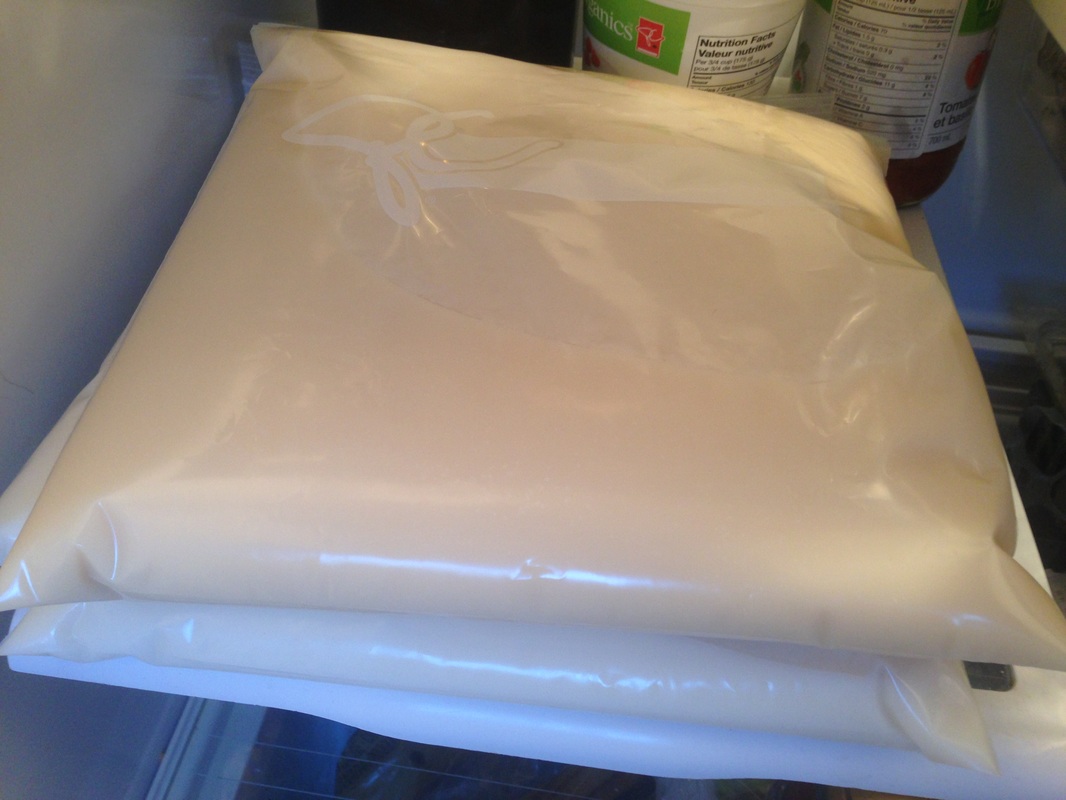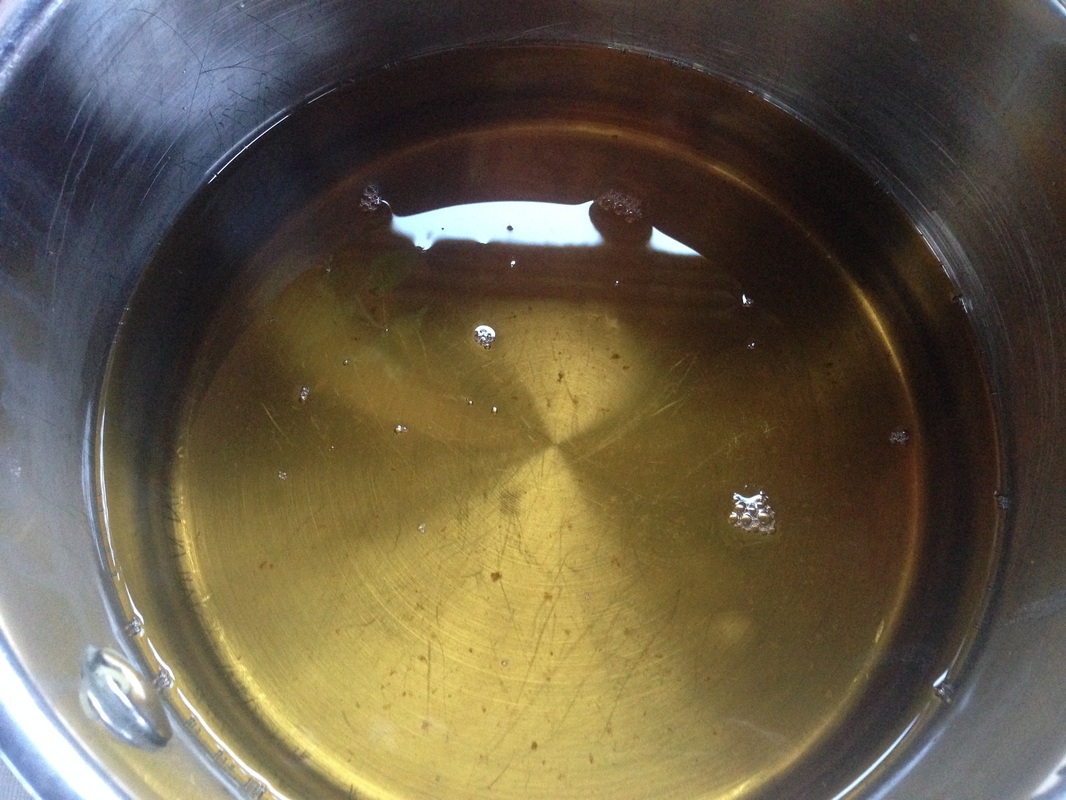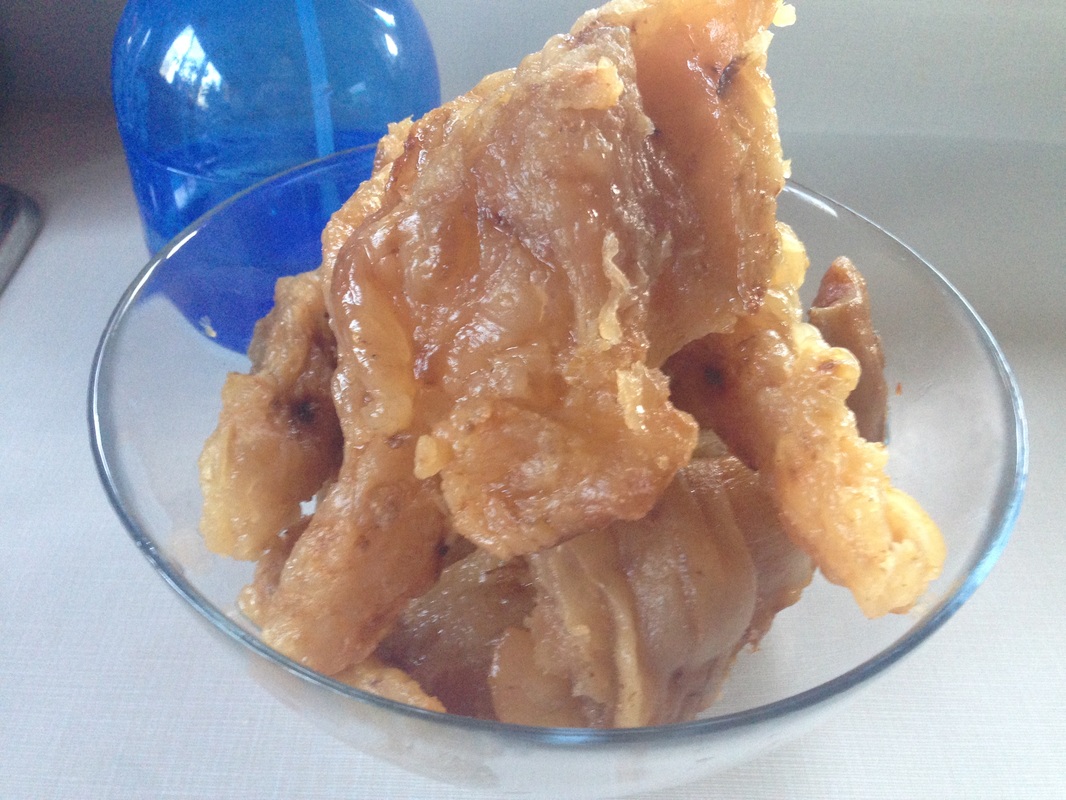There are many ways to render lard. Some folks cut up the fat into tiny pieces and put it in a pot on top of the stove on very low heat. Sometimes a little water is added to prevent scorching until the fat melts enough, while others don't. I don't cut the hunks of fat, not do I add water or cook it on the stove top. Those are way too labour intensive. Instead, I pack the fat into a large roaster and put that in the oven at the 175 F temperature mark for a long time. After I see clear fat in the pan, I ladle it out carefully. The ladled fat does not have to be strained. The method that requires the fat to be cut and then cooked requires straining. I like simple ways.
So, the fat was put in whole big chunks in a slow oven and forgotten. As long as I was not out chasing sheep in the bush, I was able to ladle out the clean melted fat. I put it in a pot, but a temperature proof bowl or any container really would be fine. It is HOT and not to be fooled with. Spilled fat on skin burns very deeply. Due care and caution is very necessary. I ladled the fat out in two lots and put the last on while I chased the sheep. Fortunately it did not burn.
Today the dogs got the left over fat that was cooked. They loved it. I tried some and it was fine, but it is not like crackling skin, which is the skin with the lard that puffs up when it is deep fried in the fat as it renders. That is tasty stuff. Cooked fat, me, not so much. I finished the last of the fat the next day and will save the bits for the dogs tomorrow. Too much and they will get the runs.
The fat will be used until it is gone. It was a gift from a friend who butchered a pig that he raised, so it could not be more local. The pig is free range, running around doing what piggies do and was mostly milk fed with some grain. Although I did not get to taste the meat, I am sure it was delicious and the lard will be great for the fries tomorrow and the soap in the winter. That is one hobby that is good for the long winter days.
It is not difficult to render lard at all and I highly recommend it. If you know some one who butchers his own meat, if the fat is available, no matter what the animal, ask politely for it and then melt it down for later use. Lard is too soft for candles, but beef tallow is very good for candles and was used for centuries. Both fats make excellent lye soap using only the fat, lye and water. Isn't nature grand? Would you like to try rendering your own lard?




 RSS Feed
RSS Feed